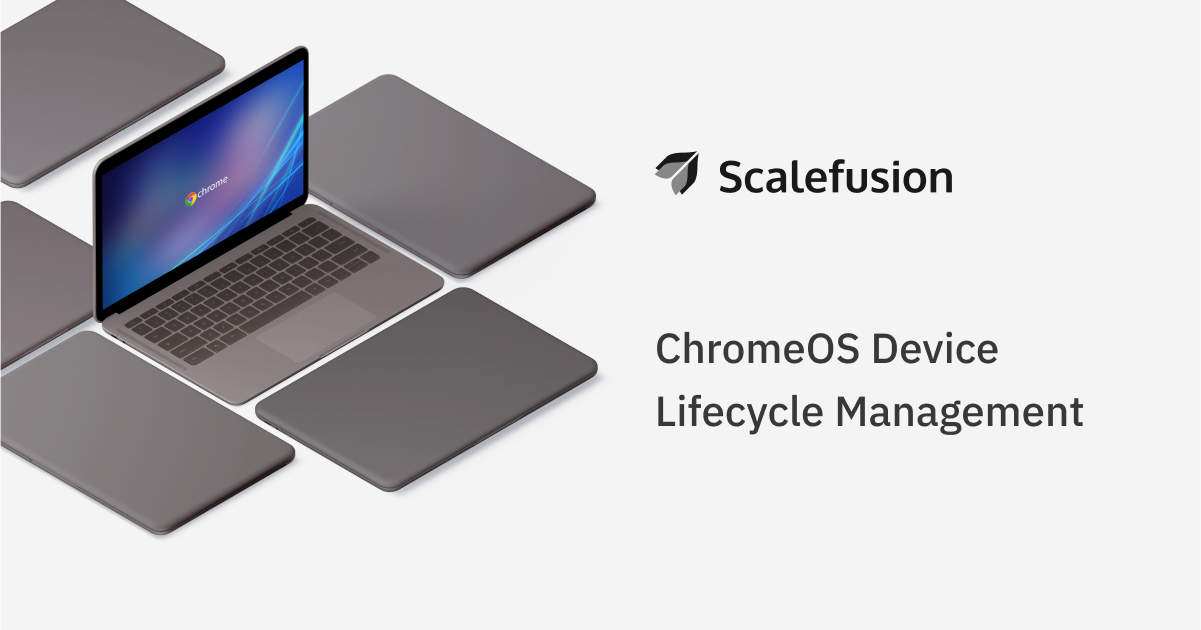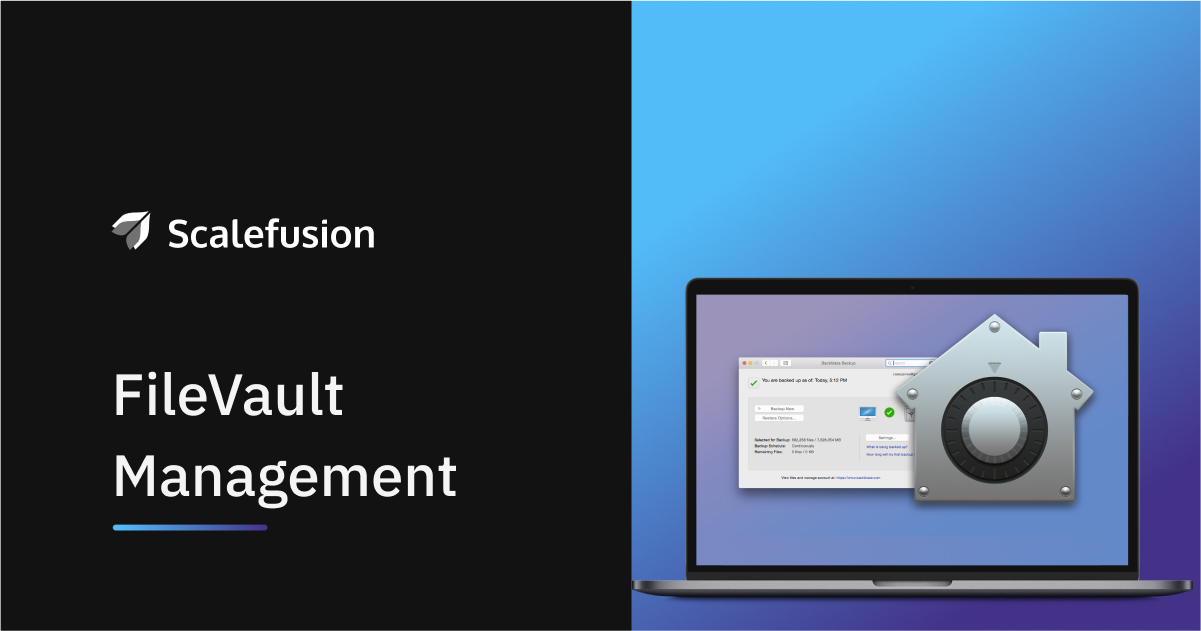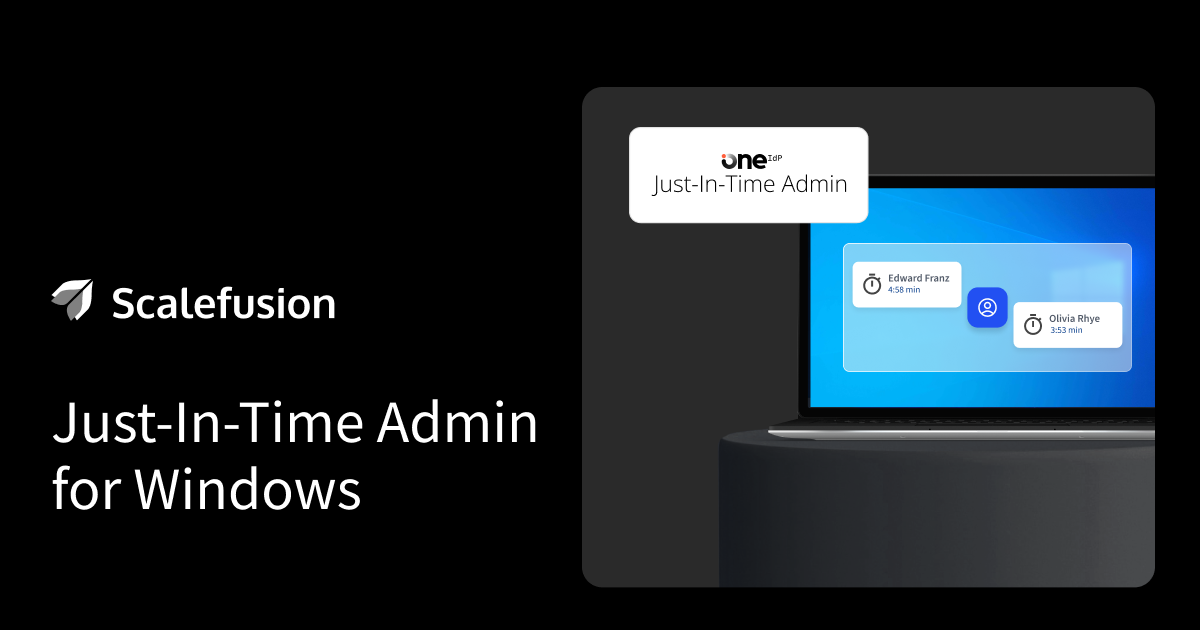
The choice of technology can significantly impact efficiency and security. ChromeOS, Google’s operating system designed for simplicity and speed, has gained adoption across various use cases. It’s because of its seamless integration with cloud-based services and security features.
ChromeOS has become popular in both enterprise and educational settings, offering a streamlined computing experience that improves productivity and reduces operational costs. However, ensuring these devices operate at peak performance throughout their lifecycle requires effective management strategies.
In this blog, we’ll explore ChromeOS device lifecycle management, a process for industries aiming to optimize the efficiency, security, and longevity of their ChromeOS devices. From initial setup to retirement, each stage plays a pivotal role in ensuring devices are utilized effectively while maintaining data security and environmental responsibility.
5 Stages of ChromeOS Device Lifecycle Management
1. Planning
The planning stage is the foundation of effective ChromeOS device lifecycle management. Before acquiring devices, businesses must thoroughly assess their needs and goals. This involves understanding the specific requirements of users, which can differ significantly depending on roles and responsibilities.
Budgeting for both hardware and software is necessary to ensure financial resources are allocated efficiently. Additionally, forecasting future needs is essential to accommodate growth and technological advancements, preventing the need for frequent and costly upgrades.
2. Procurement
Procurement is an important stage where businesses choose the right ChromeOS devices to meet their requirements. This process involves evaluating factors such as performance, durability, and compatibility with the existing IT infrastructure. Selecting devices that align with these criteria ensures long-term satisfaction.
Negotiating contracts and partnerships with suppliers can secure favorable terms and support, provide financial benefits, and ensure reliable service throughout the device lifecycle.
3. Enrollment and Provisioning
After procurement, devices must be enrolled and provisioned for deployment. This stage involves configuring devices with the necessary settings, policies, and applications using Chrome Enterprise tools.
Proper enrollment and provisioning are essential to ensure devices are ready for immediate use and comply with industry standards. This step minimizes the time required for setup and reduces potential disruptions during deployment, allowing users to quickly adapt to the new operating system and interface.
4. Management
Ongoing management of ChromeOS devices is important to maintain their health and performance. This stage includes monitoring device usage to ensure they are being utilized effectively and efficiently. Implementing updates and security patches is vital to protect against vulnerabilities and ensure devices run smoothly.
Troubleshooting issues remotely helps minimize disruptions, keep downtime to a minimum, and maintain productivity. Effective management ensures devices remain in optimal condition throughout their lifecycle.
5. Retirement
Proper retirement procedures are essential as devices reach the end of their lifecycle. This involves ensuring the secure removal of sensitive data to protect all the information. Furthermore, minimizing environmental impact is a growing concern for many businesses.
Chrome Flex is a sustainable solution, facilitating the repurposing of recycling of old hardware. By extending the usability of devices or recycling them responsibly, businesses can contribute to environmental sustainability while maximizing the value of their investments.
Chrome Flex is particularly versatile as it allows older devices to run ChromeOS, even if they were originally designed for a different OS. This flexibility provides several benefits, such as extended usability of devices, cost savings by repurposing existing hardware, and consistency across devices.
Why is ChromeOS Device Lifecycle Management Crucial?
Effective device lifecycle management is important for businesses that utilize ChromeOS devices. It ensures these devices are leveraged to their fullest potential. A structured lifecycle management process involves planning, procurement, provisioning, management, and, ultimately, device retirement.
Consider a large school district that deploys ChromeOS devices across its classrooms to improve learning through technology. In the planning stage, the district evaluates the needs of students and teachers, considering factors such as device durability, ease of use, and compatibility with educational software. Accurate planning ensures the district invests in the right number of devices with appropriate specifications, avoiding under or over-purchasing.
During procurement, the district negotiates with vendors to secure the best prices, taking advantage of educational discounts. This allows the district to stretch its budget further, allowing more classrooms to be equipped with the necessary technology.
Once the devices are procured, the enrollment and provisioning stage kicks in. Here, the IT team sets up the devices with the required applications and security settings, ensuring they are ready for use straight out of the box. This step minimizes the time teachers and students spend on configuration, allowing them to focus on learning.
The management phase is where the district’s IT department continuously monitors device performance, pushes necessary updates, and troubleshoots any issues remotely. This proactive management reduces downtime and maintains a seamless learning experience. For instance, if a student encounters a technical issue during a lesson, the IT team can swiftly resolve it without significant disruption.
Finally, when devices reach the end of their lifecycle, the retirement stage ensures secure data removal and explores options like Chrome Flex. This program allows the district to repurpose older devices, giving them a second life and reducing electronic waste. By reusing existing hardware, the district supports sustainability initiatives and maximizes its technology investments.
Hence, ChromeOS device lifecycle management improves productivity and security and promises a high return on investment.
Wrapping Up
We read about the importance of ChromeOS device lifecycle management and how it is essential for maximizing the efficiency, security, and longevity of your devices. By following the five key stages—planning, procurement, enrollment and provisioning, management, and retirement—businesses can ensure their ChromeOS devices are utilized to their fullest potential while maintaining data security and contributing to environmental sustainability.
This structured approach improves productivity and reduces operational costs. It also provides a high return on investment. Whether in education, enterprise, or other setups, a well-managed ChromeOS device lifecycle ensures technology investments are optimized, delivering consistent performance and support throughout the device lifespan.



